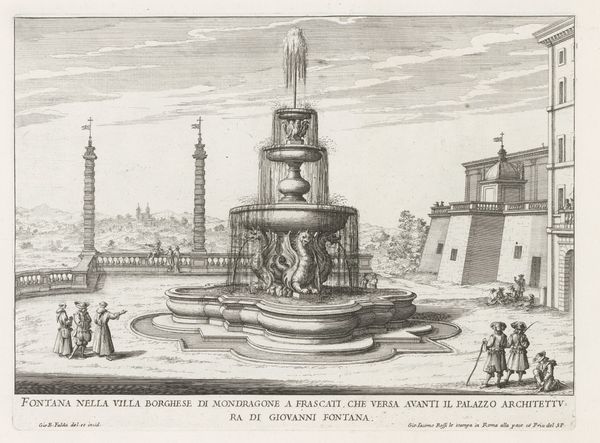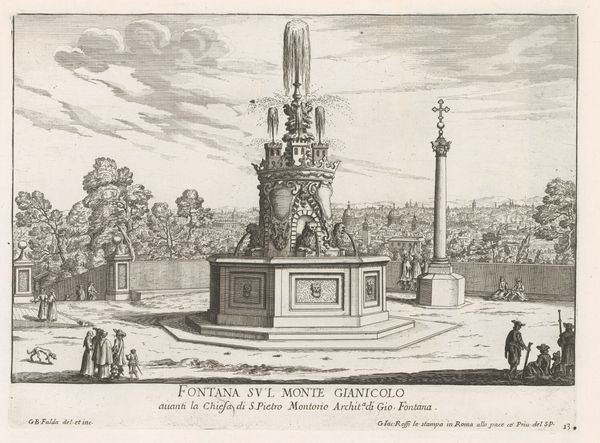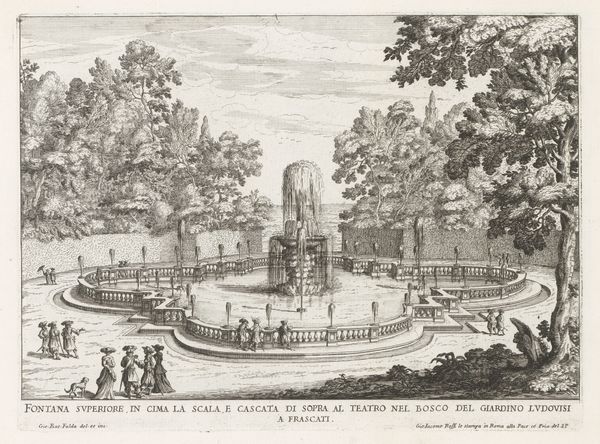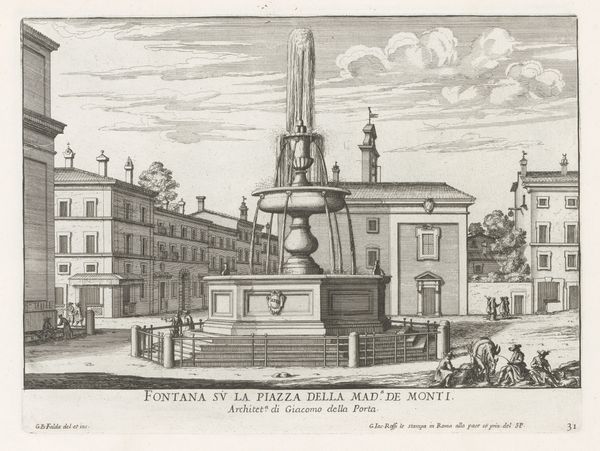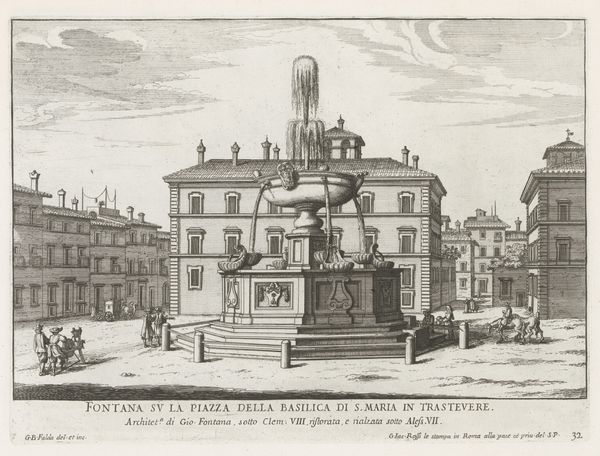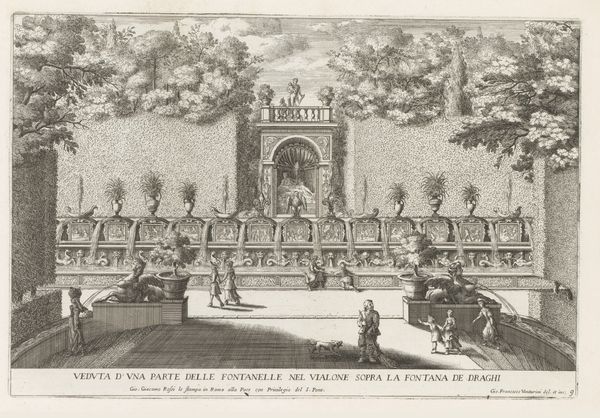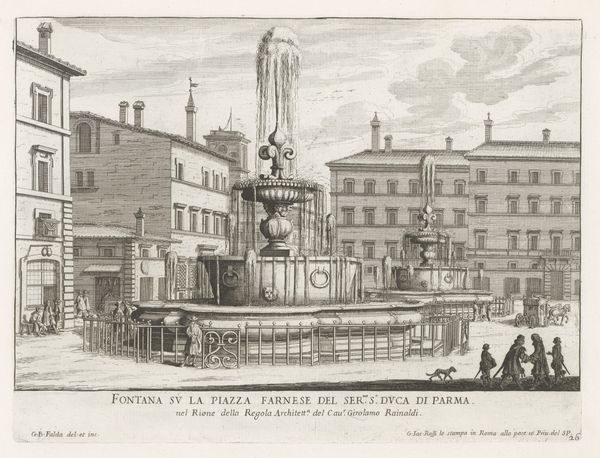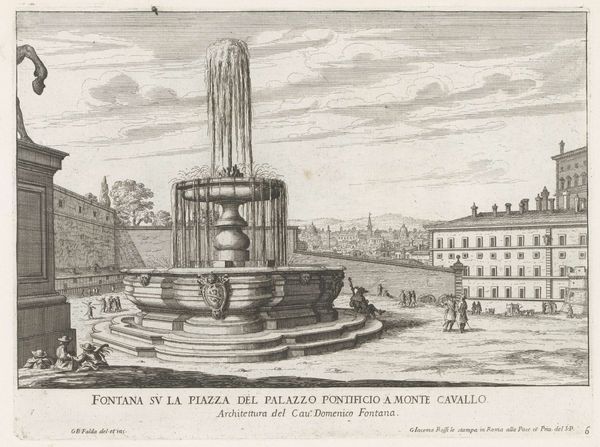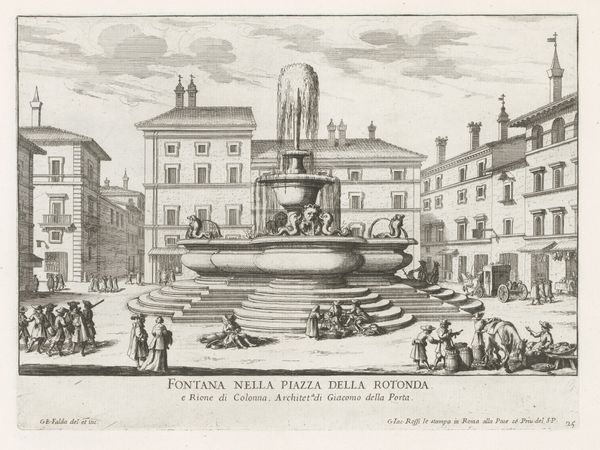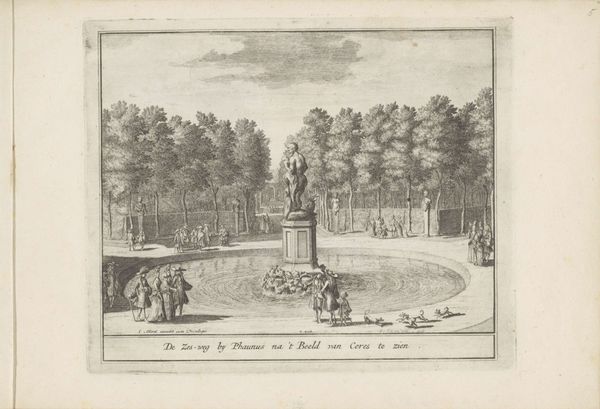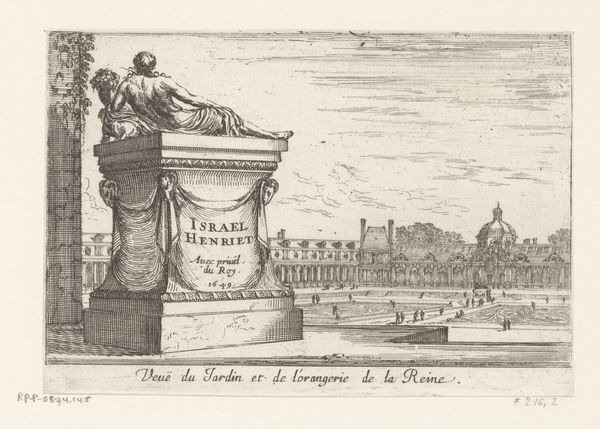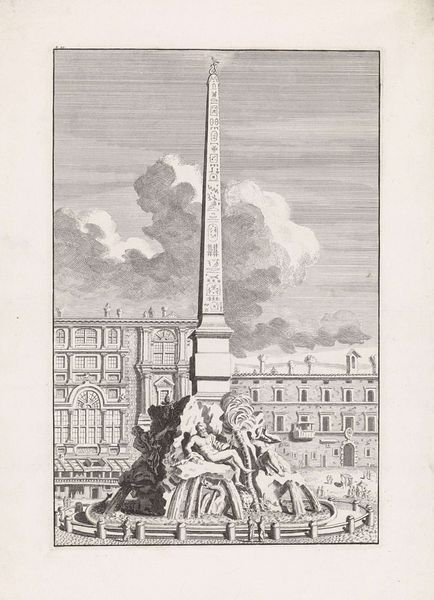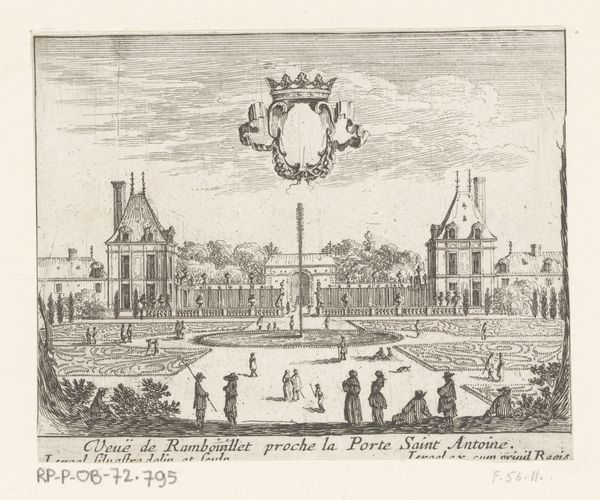
drawing, print, etching, paper, ink, engraving, architecture
#
drawing
#
baroque
# print
#
etching
#
old engraving style
#
landscape
#
paper
#
ink
#
cityscape
#
italian-renaissance
#
engraving
#
architecture
Dimensions: height 222 mm, width 296 mm
Copyright: Rijks Museum: Open Domain
Editor: This is Giovanni Battista Falda’s "Fountain in Piazza del Popolo in Rome," dating from 1653 to 1691. It’s an engraving and etching – a cityscape with elegant figures, rendered in fine lines. I find its formality and stillness rather striking. What do you see in this piece that maybe I'm missing? Curator: What I find fascinating is the dance between grandeur and everyday life, all caught in ink on paper! Imagine the sheer audacity of Domenico Fontana, the architect, daring to manipulate water, stone, and public space. Falda then captures it – not just the fountain, but the pulse of Roman life around it. Notice how those tiny figures aren’t merely decorative. To me they whisper stories of commerce, social hierarchy, even political maneuvering! Editor: So the people add another layer to the fountain's presence? Curator: Exactly! It’s like Falda's handing us a little stage, and saying, "Look! Here’s how power presents itself and how life swirls around it!" Do you think the figures seem overwhelmed by the scale? Editor: Well, now that you mention it, maybe a little. The fountain definitely dominates the scene. I was focused on the precision of the architectural rendering and the neatness of it all. Curator: Precision is Falda's genius, his way of freezing a moment of time for our scrutiny. Perhaps in that control, he subtly comments on the controlling forces of the Baroque era. It is worth keeping in mind that "Fontein op Piazza del Popolo te Rome" captures the moment when an ancient society transitioned to modern urban life. Editor: This has totally changed how I see it. It’s not just a fountain; it's a statement! I appreciate this. Curator: And I, in turn, admire your fresh eyes noticing what might often get overlooked in well-known art pieces!
Comments
No comments
Be the first to comment and join the conversation on the ultimate creative platform.
